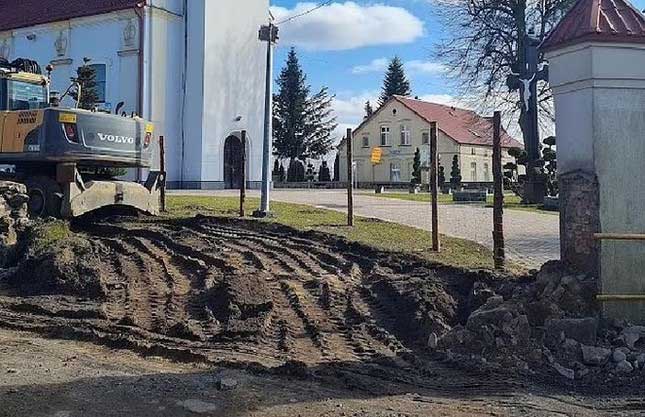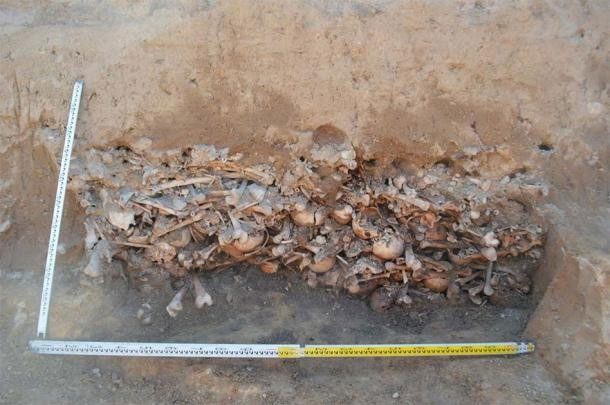Workers constructing a road in Luzino, northeastern Poland, have stumbled upon a disturbing grave in which the deceased was “restrained” with multiple measures due to suspicions of being a vampire.
According to Ancient Origins, the most intact skeletons unearthed were found in a horrifying position, with the skull placed between the legs, accompanied by a coin in the mouth. The grave also contained three gigantic urns filled with many other bones.
Archaeologists estimate the total number of skeletons in this mass grave to be around 450, buried in the 19th century.

Excavation site of the “vampire” grave in Luzino – (Photo: UG LUZINO).
In an interview with Poland’s First News, local archaeologist Maciej Stromski, one of the leaders of the excavation, stated that this disturbing burial method reflects the belief that the dead could rise from their graves.
In other words, they were suspected of being vampires and were brutally “restrained” after death.
Skeletons buried according to the rituals imposed on “vampires” are quite rare; the discovery of this large grave may be linked to an epidemic that swept through the area 200 years ago.

Some bone fragments found in urns, alongside skeletons with skulls placed between the legs – (Photo: Maciej Stromski).
Historical documents indicate that those suspected of being vampires often suffered from conditions that made them appear pale or forced them to avoid sunlight, or required blood transfusions due to severe anemia, such as certain genetic disorders.
Additionally, tuberculosis was a common cause of such suspicions, as patients often appeared pale and coughed up blood, with a gaunt appearance that matched descriptions of vampires in folklore.
Vampire legends are varied in Poland, with many different beliefs about actions that could prevent a vampire from rising after death.
Some graves were “restrained” by placing objects like garlic, crosses, or holy water near the corpse; while others revealed more extreme and terrifying measures such as decapitation, staking through the heart, or sealing in steel coffins…


















































